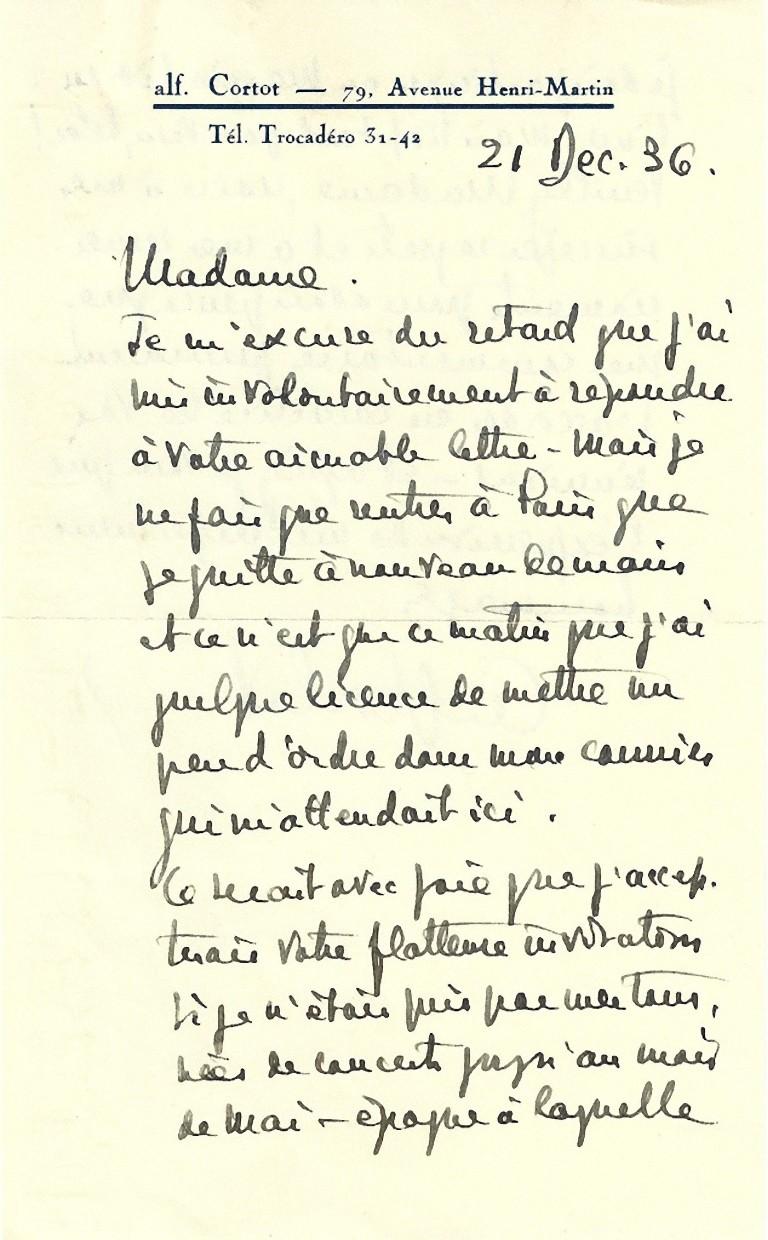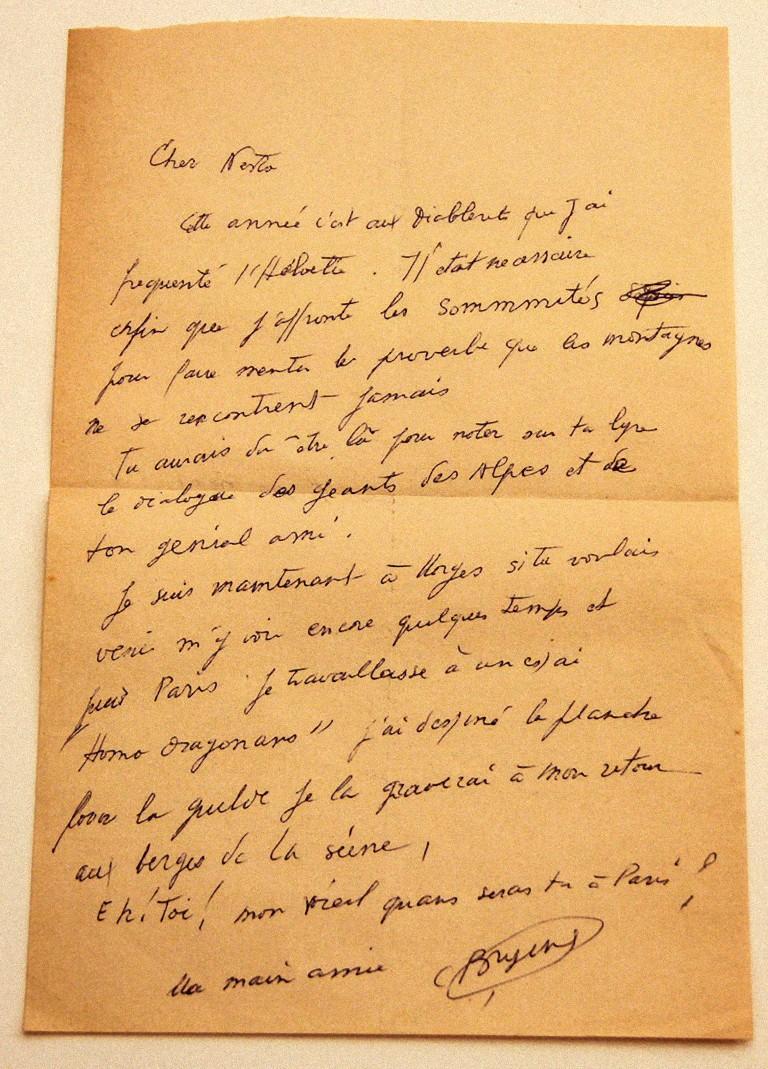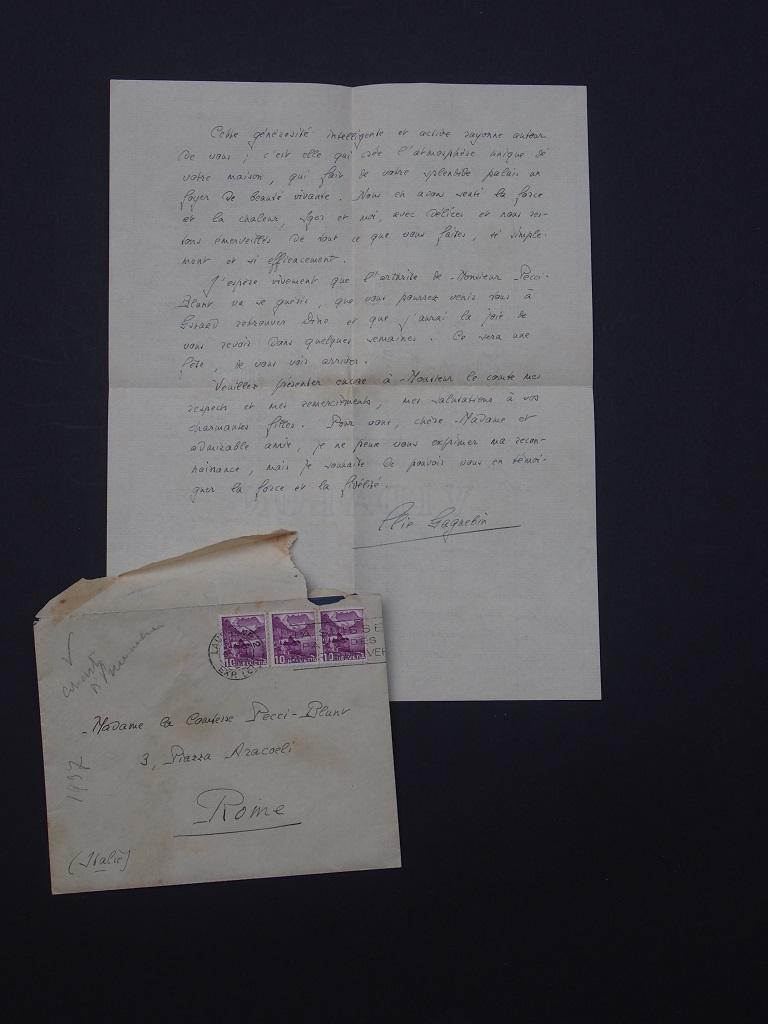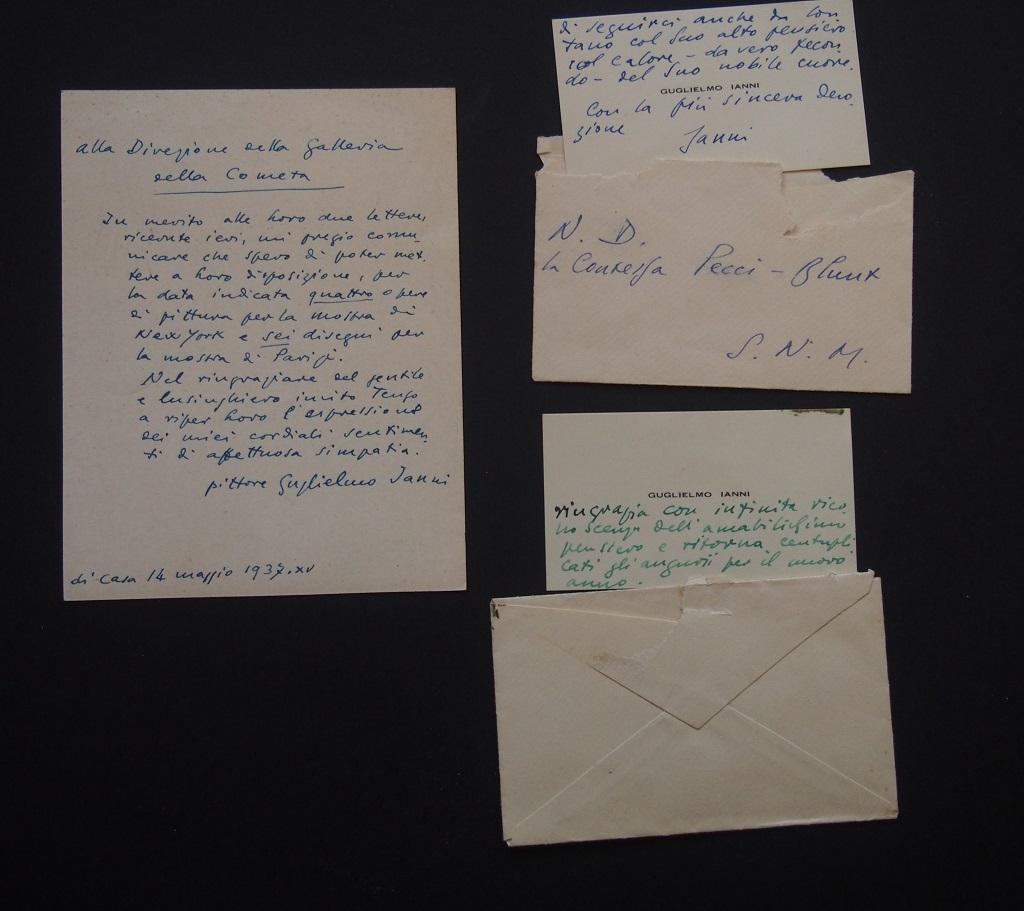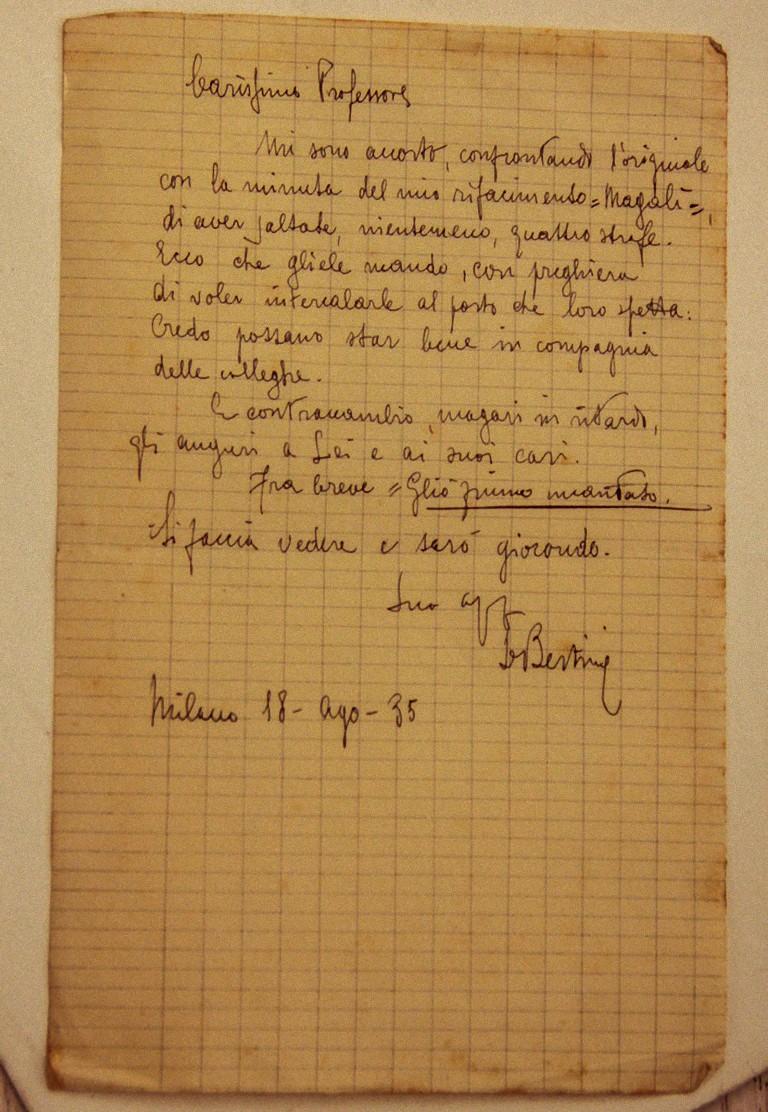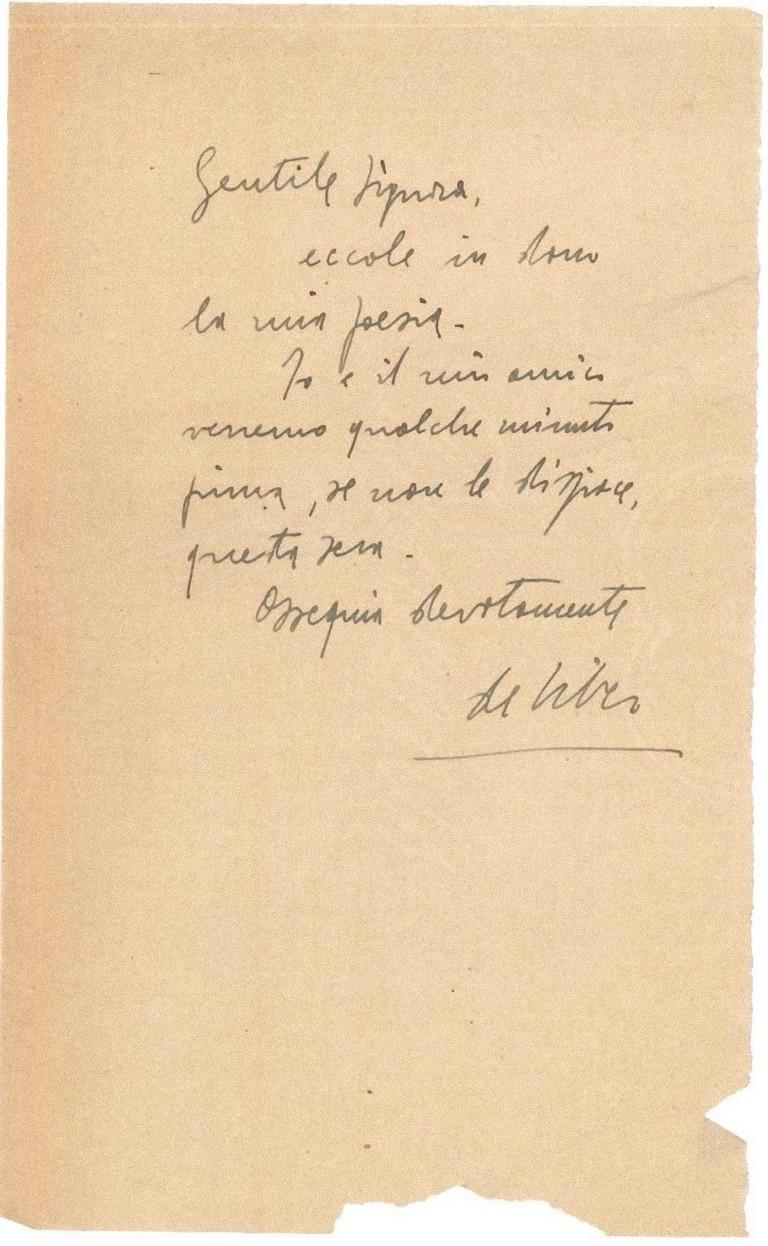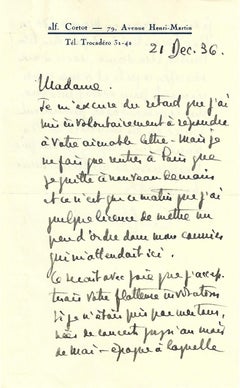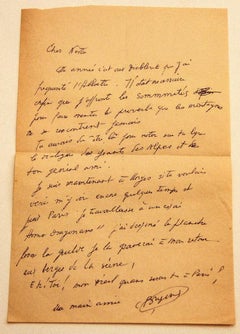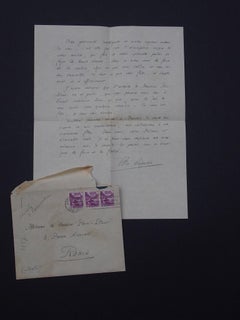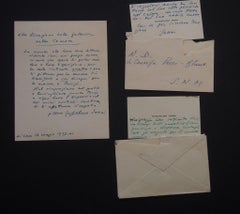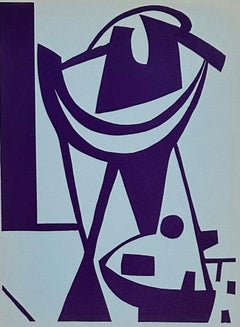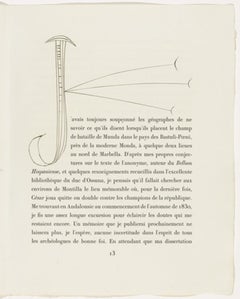Items Similar to Set of Two Letters by M. Bibesco - 1933; 1940
Want more images or videos?
Request additional images or videos from the seller
1 of 3
Marthe BibescoSet of Two Letters by M. Bibesco - 1933; 19401933, 1940
1933, 1940
$540.25
$720.3325% Off
£395.57
£527.4325% Off
€450
€60025% Off
CA$733.58
CA$978.1025% Off
A$822.33
A$1,096.4525% Off
CHF 428.83
CHF 571.7725% Off
MX$10,079.81
MX$13,439.7525% Off
NOK 5,433.98
NOK 7,245.3125% Off
SEK 5,166.26
SEK 6,888.3425% Off
DKK 3,424.73
DKK 4,566.3125% Off
Shipping
Retrieving quote...The 1stDibs Promise:
Authenticity Guarantee,
Money-Back Guarantee,
24-Hour Cancellation
About the Item
This is a wonderful Set of Two Letters composed by two items part of the official and unofficial correspondence between the French writer Marthe Bibesco to the Countess Anna Laetitia Pecci-Blunt between 1933 and 1940:
- LTS Typewritten Letter Signed and Dated by Marthe Bibesco to the Countess Anna Laetitia Pecci-Blunt. Dated: Paris, 22th Avril 1933. In French. In 16°. In excellent conditions. Autograph Signature: "Marthe Bibesco".
-LAS Autograph Letter Signed and Dated, on headed paper "Grand Hotel - Roma". 28 May 1940. Including the original envelope with the headed paper "Office central de la Fédération Aéronautique Internationale".
"J'ai pensé que vous me donneriez quelque chose de ravisant sur New York ou sur Rome". A really interesting lot could understand "le rythme de la vie mondaine".
Bibesco or Bibescu Marthe (Bucharest 1890 - Paris 1973) on headed.
Marthe Bibesco was a French writer of Romanian origin Descendant from the princely family, she was educated and lived in Paris, where she was noted for the novel Le perroquet vert (1924). In this and the following books he recounted the nostalgia of his native country or the life of aristocratic and cosmopolitan environments.
- Creator:Marthe Bibesco
- Creation Year:1933, 1940
- Dimensions:Height: 7.68 in (19.5 cm)Width: 5.91 in (15 cm)Depth: 0.04 in (1 mm)
- Medium:
- Movement & Style:
- Period:
- Condition:Insurance may be requested by customers as additional service, contact us for more information.
- Gallery Location:Roma, IT
- Reference Number:Seller: M-1038241stDibs: LU65037671012
About the Seller
4.9
Platinum Seller
Premium sellers with a 4.7+ rating and 24-hour response times
1stDibs seller since 2017
7,578 sales on 1stDibs
Typical response time: 2 hours
- ShippingRetrieving quote...Shipping from: Roma, Italy
- Return Policy
Authenticity Guarantee
In the unlikely event there’s an issue with an item’s authenticity, contact us within 1 year for a full refund. DetailsMoney-Back Guarantee
If your item is not as described, is damaged in transit, or does not arrive, contact us within 7 days for a full refund. Details24-Hour Cancellation
You have a 24-hour grace period in which to reconsider your purchase, with no questions asked.Vetted Professional Sellers
Our world-class sellers must adhere to strict standards for service and quality, maintaining the integrity of our listings.Price-Match Guarantee
If you find that a seller listed the same item for a lower price elsewhere, we’ll match it.Trusted Global Delivery
Our best-in-class carrier network provides specialized shipping options worldwide, including custom delivery.More From This Seller
View AllAutograph Letter by Alfred Cortot - 1936
Located in Roma, IT
This is a superb Autograph Letter Signed by Alfred Cortot to the Countess Pecci- Blunt. Paris, December 21st 1936.
In French. One page, double-sided. On...
Category
1930s Modern More Art
Materials
Paper, Ink
$342 Sale Price
25% Off
Letter by Camille Bryen to Nesto Jacometti - Mid-20th Century
By Camille Bryen
Located in Roma, IT
Letter written by Camille Bryen to Nesto Jacometti, with no date (most probably 1950s or early 1960s) and is written in French.
Category
1960s Modern More Art
Materials
Paper, Ink
Greeting Letter by Elie Gagnebin - 1937
Located in Roma, IT
This is a Autograph Greeting Letter Signed by Elie Gagnebin (Liège, 1891- Zurich, 1949) to the Countess and Patron of Arts, Anna Laetitia Pecci-Blunt, best-known as Mimi.
Lausanne, ...
Category
1970s More Art
Materials
Paper, Ink
$342 Sale Price
25% Off
Set of Autographs by Guglielmo Janni - 1937
By Guglielmo Janni
Located in Roma, IT
This set of Autographs by Guglielmo Janni to Anna Laetitia Pecci Blunt, is composed of 3 items, written around 1937, in French.
In excellent condition, including original envelopes...
Category
1930s Modern More Art
Materials
Paper, Ink
$450 Sale Price
25% Off
Letter by Enrico Bertini - 1930 ca.
By Enrico Bertini
Located in Roma, IT
In the letter Bertini writes to his friend talking about his poem "Magali", and sends his best regards.
Category
1930s Contemporary More Art
Materials
Paper, Ink
$270 Sale Price
25% Off
Letter by Libero De Libero - Mid-20th Century
Located in Roma, IT
L.A.S. s. l. n. d addressed to Countess Pecci Blunt. (13.5x22 cm). Ripped on the bottom edge.
As a regular client of the "Aragno" café, "oversaw" by Cardarelli and Francesco Trombadori, the young De Libero finds his place inside the new school of Via Cavour. In that environment, painters like M. Mafai, Antonietta Raphaël...
Category
Mid-20th Century Modern More Art
Materials
Paper, Ink
$270 Sale Price
25% Off
You May Also Like
1939 Cheret 'Exposition de l'Affiche en couleurs de Cheret a nos jours' Art Book
Located in Brooklyn, NY
Exposition de l’Affiche en Couleurs de Chéret à Nos Jours (July-August 1939), published by the Conservatoire National des Arts et Métiers, is a catalog from the renowned exhibition t...
Category
1930s Art Nouveau Prints and Multiples
Materials
Lithograph
Contract of Mathieu Matégot & Artimeta, 1953
By Artimeta, Mathieu Matégot
Located in Barcelona, Barcelona
Contract between Matheiu Matégot and Artimeta International for the production in Holland of different pieces by Matheiu Matégot.
Measures: 21 x 27 ...
Category
Vintage 1950s Dutch Mid-Century Modern Prints
Materials
Paper
Untitled from XXe Siecle No. 4
By Jean Hélion
Located in Washington, DC
Artist: Jean Helion
Title: Untitled
Portfolio: XXe Siecle No. 4
Medium: Linocut
Date: 1938
Edition: Unnumbered
Frame Size: 19 3/4" x 16 3/4"
Sheet Size: 12 5/8" x 9 5/8"
Signature: U...
Category
1930s Modern Abstract Prints
Materials
Linocut
Monogram J (Plate II), from Carmen
By Pablo Picasso
Located in Washington, DC
Artist: Pablo Picasso
Title: Monogram J (Plate II)
Portfolio: Carmen
Medium: Etching on Montval wove paper
Year: 1949
Edition: 289
Sheet Size: 13" x 10 3...
Category
1940s Cubist Abstract Prints
Materials
Etching
Bouteille et Vitre
By (after) Pablo Picasso
Located in Brooklyn, NY
Bouteille de Vitre (Glass Bottle) is an original stone lithograph by Pablo Picasso, created as part of the first printing from Dans l’Atelier de Picasso. This lithograph, an after (d...
Category
1930s Cubist Still-life Prints
Materials
Lithograph
Calmann-Lévy & Georges Bataille Signed Lettrer
By Georges Bataille
Located in Barcelona, Barcelona
Lettrer between Georges Bataille and Calmann-Lévy, 1947.
Hand-signed by Bataille and paper with Calmann-Lévy's letterhead
In good original condition, with consistent with age a...
Category
Vintage 1940s French Mid-Century Modern Prints
Materials
Paper
More Ways To Browse
Signed Letters
Vintage Sign Letters
Vintage Letter M Sign
Les Perroquets
The Above Gallery
19th Century Still Life
Paintings 1961
Painting By Joseph
Sensual Art
Yellow Sculpture
Vintage Celebrity Photographs
1930s New York
Master Ink Art
Blue And Orange Painting
New Orleans Art
Mid Century Modern Oil Paintings
Nude Body
19th Century American Artists
